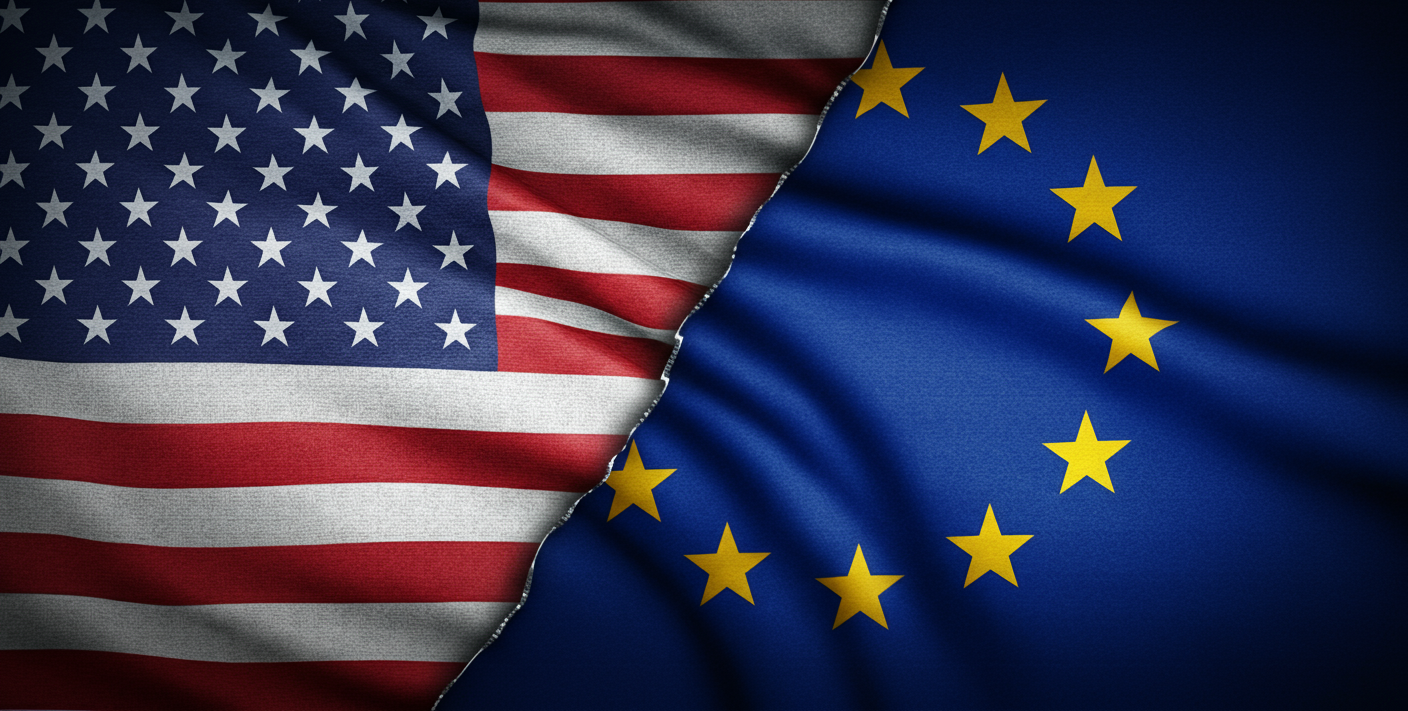The Art of the Deal?

As of Sunday, July 27, the United States and the European Union have signed a new trade agreement, imposing a 15% tariff on most EU goods entering the US, while no new tariffs on US goods entering the EU will be implemented. Given that the trade relationship between the two is worth over $1.68 trillion, the aversion of a potential trade war can only be welcomed—but the news for US consumers is less than ideal.
Had this agreement not been reached by August 1, President Trump had first threatened a 30% tariff across the board. While the finalized 15% is lower than the original promised tariff, it is still an increase on the previous 10% tariffs that were introduced on all EU goods entering the US set on April 2, 2025, under Trump, and significantly higher than the 1.2% tariff from before Trump’s second term.
It has been Trump’s standard approach to economic negotiations to use the threat of tariffs, backed up by America’s economic might, to renegotiate or, in some cases, completely upend existing trade deals. Typically, Trump has considered these deals to be exploitative or skewed against the States. In this instance, the motivation was clear: the US trades at a deficit with the EU bloc, estimated to be over $230 billion in 2024, a common factor in Trump’s negotiating tactics.
While the initial threat of 30% left many European leaders “scrambling,” the breakthrough agreement of 15% tariffs on roughly 70% of goods has been welcomed, with some major exceptions, including steel—which is still facing a 50% tariff in a bid to protect American manufacturers.
Most notably, as part of the deal, the EU has committed to purchasing $750 billion worth of energy and making a $600 billion investment in the US. On the other end, US car manufacturers are expected to benefit from easier trade rules and even a reduction in tariffs, from 10% to 2.5%. We could well see US cars entering the European market en masse, although complex supply lines requiring components from Mexico and Canada might interrupt such a flow.
Attitudes toward the deal are divided, on both sides of the ocean: President Trump has described the deal as the “biggest deal ever made,” as part of his usual hyperbole, while critics have pointed to the significant increase on tariffs from 1.2% that means many European products are going to become increasingly expensive for the average American customer. Given that the US buys primarily pharmaceutical goods, energy machinery, and cars from the EU, this could well be substantial, and hurt the voters most likely to support Trump.
On the European side, there remain significant disagreements—potentially even more paralyzing, as any trade deal must be ratified by the European Council, a body that represents the members of the bloc, not all of whom support the deal. The most vocal opponent is the government of France, with Prime Minister François Bayrou saying the deal represented “a dark day for the EU,” and trade minister Laurent Saint-Martin criticizing the way the Council handled the negotiations. By contrast, European trade commissioner, Maroš Šefčovič (from Slovakia), described it as a “breakthrough” against a potential ruinous trade war, and Italian prime minister Georgia Meloni welcomed the deal as a means to avoid further escalation.
The only nation that has joined France in publicly opposing the deal, however, is Hungary, with Prime Minister Viktor Orban, who said Trump “ate” the President of the European Union, Ursula von der Leyen (from Belgium), “for breakfast.”
Interestingly, the deal has further inflamed existing tensions on the island of Ireland, where Northern Ireland—part of the United Kingdom and governed separately from the rest of the Republic of Ireland—benefits from only a 10% tariff on goods as part of the British trade deal, while the Republic will be subject to the EU’s 15% tariffs.
The deal may be welcomed by those who support Trump’s economic chauvinism in attempting to redress the global balance of trade, and they may even trumpet the fact that 30% tariffs have been avoided—but doing so would miss the fact that the previous tariffs of merely 1.2% have evaporated. Time will tell if this trade deal will benefit the American people.
The post The Art of the Deal? was first published by the Foundation for Economic Education, and is republished here with permission. Please support their efforts.



